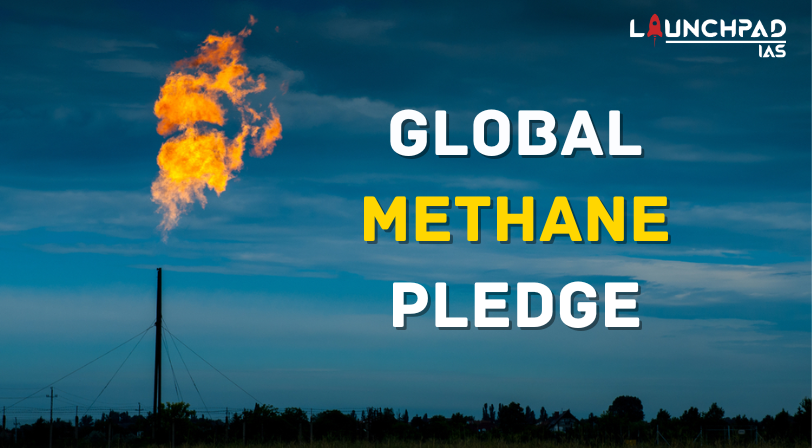About
- The Global Methane Pledge was launched at COP (Conference of Parties) 26 in November 2021 to catalyze action to reduce methane emissions.
- Global Methane Pledge was led by the United States and the European Union.
- Global Methane Pledge has 111 country participants who together are responsible for 45% of global human-caused methane emissions.
- India, which is not a part of the Global Methane Pledge, is among the top five methane emitters globally. Most emissions can be traced back to agriculture.
- By joining the Global Methane Pledge, countries commit to work together to collectively reduce methane emissions by at least 30% below 2020 levels by 2030.

What is Methane?
- Methane is the simplest hydrocarbon, consisting of one carbon atom and four hydrogen atoms (CH4).
- It is flammable and is used as a fuel worldwide.
- Methane is a powerful but short-lived climate pollutant that accounts for a third of net warming since the Industrial Revolution. Rapidly reducing methane emissions from energy, agriculture, and waste can achieve near-term gains in our efforts in this decade for decisive action and is regarded as the single most effective strategy to keep the goal of limiting warming to 1.5˚C within reach while yielding co-benefits, including improving public health and agricultural productivity.
- Methane has more than 80 times the warming power of carbon dioxide over the first 20 years of its lifetime in the atmosphere.
- It has a shorter lifespan in the atmosphere compared to carbon dioxide.
- The common sources of methane are oil and natural gas systems, agricultural activities, coal mining, and wastes.
Impact of Methane
- Potent greenhouse gas: According to the International Energy Agency (IEA) methane has a much shorter atmospheric lifetime (12 years as compared to centuries for CO2), it has a more potent greenhouse potential because it absorbs more energy while it is in the atmosphere.
- Methane is a powerful pollutant and has a global warming potential that is 80 times greater than carbon dioxide.
- Further, increases CO2: As methane is emitted into the air, it reacts in several hazardous ways. For one, methane primarily leaves the atmosphere through oxidization, forming water vapor and carbon dioxide. So, not only does methane contribute to global warming directly but also, indirectly through the release of carbon dioxide.
- Other impacts: Methane also contributes to the forming of the ozone, decreasing air quality and leading to various health issues in animals, premature human deaths, and reduced crop yields.
Reasons for the Rising of Methane
- Doesn’t come under any protocol like the Paris protocol so no concrete efforts taken
- Increase in anthropogenic activities.
- Lockdown reduced the CO2 level but the emission of methane is significant from the agricultural field and household consumption etc.
- Atmospheric methane increased during lockdowns imposed to control the spread of the novel coronavirus disease (COVID-19)
- The concentration of methane has increased by at least 150% since the industrial revolution.


